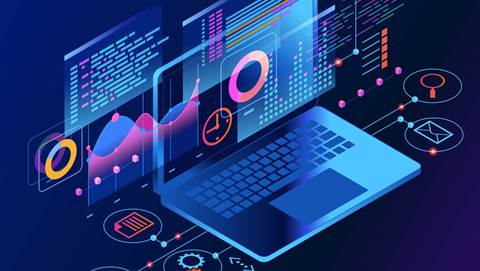During this difficult Covid-19 period, something extraordinary happened. Pharmaceutical companies could develop Covid-19 vaccines 10 times faster than usual. Most of us may not be aware, but to a significant extent, we have the technological convergence of AI-driven predictive analytics and high-performance computing (HPC) to thank.
The coming together of AI, data analytics and HPC has revolutionised and dramatically sped up drug discovery. Using computational drug discovery technology, pharmaceutical companies can conduct over a million experiments in a week, something simply impossible to achieve in a regular in vitro environment.
The AI, data analytics and HP convergence
Beyond medicine, many viable use cases for AI, data analytics and HPC convergence exist today.
Autonomous things, for example, are fundamentally driven by ultra-fast computation of vast volumes of data − the market can expect to see a proliferation of smart/autonomous devices as the three elements come closer together. This trend is already visible but will expand to entirely new classes of devices.
Manufacturing is also being transformed. Manufacturers are sitting on enormous product test archives, and reams of in-service data that characterizes the real product’s behaviour. Data analytics and AI can help manufacturers’ engineers use this insight to simulate more “what if” scenarios, yielding tremendous benefit.
For example, convergence-enabled digital twin technology helps car engine manufacturers simulate and finetune production in a factory before building a physical facility. Instead of waiting until actual production vehicles run on the road to get data to refine the next batch of engines, car engine manufacturers can “get it right the first time” by using AI, data analytics and HPC to simulate actual on-road running conditions before even starting production.
Aircraft engine manufacturers, instead of spending much time and resources to physically produce and test prototype engines, can apply AI and machine learning (ML) to previously obtained test results to refine and optimise their designs. This can shave billions of dollars and years off development cost and time.
As an example in this region, Serba Dinamik, a Malaysia-based services and power generation systems provider to the oil and gas industry, is using converged data analytics, AI and ML to develop more reliable turbines, and implement advanced predictive maintenance on its gas turbine generators. These generators are installed on offshore oil rigs to provide electricity to operations on the rig.
Improving turbine reliability and accurately predicting failures before they occur help Serba Dinamik customers like Shell, Exxon Mobil and Petronas save rig downtime costs that can run into millions of dollars each day.
In the financial services sector, AI-driven predictive analytics can help banks find associations and patterns across large numbers of complex datasets; decipher subtle trends, patterns and exceptions; and flag potentially fraudulent transactions. Elements of HPC can help financial institutions cope with the increasing speed of data, and can stop fraud in near real-time.
In fact, no industry is too far for the long arms of convergence to reach.

Cloud is important in a digital-first world because as the quantity of structured and unstructured data increases, organisations face the challenge of processing not just the quantity of data, but curating and unlocking the insights from the data in a timely manner.
- Sudhir Padaki, Director of Data & Analytics, Altair Asia Pacific.
We’re now entering a virtuous cycle
The exciting thing before us now is that over the next few years – thanks to cloud computing technology – many more businesses will be able to access the benefits of this convergence.
We are about to enter a virtuous circle. As companies find more and more ways to deploy AI for real time predicting and prescribing, the resource requirement for training data and heavy models will drive demand for HPC infrastructure on the cloud.
And as high-speed and secure cloud services become ubiquitous globally, practically any business in APAC will be able to have access to powerful data processing capability easily and affordably, allowing them to slash production resources while reaching out to new customer demographics.
Cloud is important in a digital-first world because as the quantity of structured and unstructured data increases, organisations face the challenge of processing not just the quantity of data, but curating and unlocking the insights from the data in a timely manner.
There are also cost implications to process and store data on-site. Research has shown that for every dollar an organisation spends on capturing data, they need to spend several dollars more to process, store and transform the data.
A recent study by services firm Genpact and the MIT Sloan CIO Symposium found that 82% of CIOs aspire to become data driven, and realise that access to data and generating actionable insights is key to improving agility in the enterprise, and also in providing a competitive edge to the business.
The cloud offers organisations a distributed and scalable platform for processing data in real time, and serves as a cost-effective storage and processing platform for large amounts of data. With the use of cloud, businesses can also supplement internal data with third-party data from the hyperscalers market or from independent data sources.
Integrated platforms that bring together advanced data analytics, HPC and cloud resources are already available on the market today to help organisations run computational science applications at scale. Through these platforms, firms can optimise outcomes and achieve faster time-to-value.
The prospects for APAC businesses that can tie cloud to convergence, and further tie their cloud, data and analytics strategies to specific business outcomes, are bright. Organisations should move soon to harness this convergence for long term business growth.
Sudhir Padaki is Director of Data & Analytics at Altair Asia Pacific.










